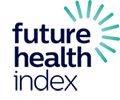AI: The Missing Puzzle Piece in Accelerating Clinical Decisions


Feb 05, 2021 - reading time 5 mins
By Peter Quinlan Business Leader, Precision Diagnosis and Image-Guide Therapy, Philips ASEAN Pacific Peter Quinlan is the Business Leader for Precision Diagnosis and Image-guided Therapy (IGT) for Philips ASEAN Pacific. He leads Philips’ Precision Diagnosis and IGT business clusters across the region, which focuses on bringing together businesses related to the future promise of precision systems, informatics, solutions and services as well as providing integrated solutions that advance minimally invasive procedures.

Clinicians have a heavy responsibility; their decisions turn information into actions. Today, there is a growing need for innovation in clinical decision making. COVID-19 has shown us that in emergency situations, these critical decisions can be the difference between life and death. With chronic diseases are on the rise, healthcare systems are under pressure to deliver better care to more people at lower cost.
The amount and granularity of the stored digital medical and healthcare data has increased exponentially, but only a fraction of it is being used to improve the efficiency and quality of care. The speed of data accumulation is far outpacing our ability to analyse it. Today, 47 percent of Singapore’s younger healthcare professionals1 say their medical education prepared them a little or not at all for data analysis and interpretation, according to Philips’ Future Health Index (FHI) 2020 report. In fact, up to 83 percent believe that the current state of interoperability between platform needs to be improved to ensure healthcare data is utilized to its fullest potential, and 92 percent of them believe that the adoption of artificial intelligence (AI) is instrumental in providing more accurate diagnoses.
Potential of AI in supporting first-time-right diagnosis
Fast and first-time-right diagnosis remains critical to the goal of preventing wastage of resources and challenges due to incorrect diagnosis. Unnecessary repeat scans eat up time, budget, and resources, while delaying diagnosis and treatment. Missed or erroneous diagnoses still occur. For example, AI can enable us to read CT scan images 26 percent faster and detect 29 percent of previously missed modules2. AI is now gaining traction in healthcare because of its ability to help generate insights from large amounts of data, offering a much-needed helping hand to overburdened staff. AI and deep learning algorithms are ideal to support pattern-centric medical disciplines such as radiology and pathology. Deep learning algorithms are able to uncover even the subtlest of patterns in data, unhindered by human limitations in perceptual acuity or the constraints of prior knowledge. This relieves time-pressured professionals in a range of tasks, from grading the severity of cancer based on tissue specimens and detecting tumours, to monitoring disease progression over time in MRI scans. With actionable insights at hand, healthcare professionals can make the right clinical decisions at the right time. These insights support stronger feedback loops and more confident and precise clinical decisions, improving care throughout the health continuum. Overcoming AI adoption barriers Despite this potential, Singapore’s healthcare professionals are not leveraging it enough to improve diagnostic efficiency. According to Philips’ Annual Future Health Index (FHI) 2019 report, healthcare professionals in Singapore are using AI technology more for improving the accuracy and efficiency of administrative tasks such as staffing and patient scheduling (37%) than for diagnosis (28%), flagging patient anomalies (26%) and facilitating remote patient monitoring (25%). Apprehension amongst Singapore’s healthcare professionals may be one of the barriers to wider adoption, with one in five (20%) admitting that they fear their long-term job security3 is threatened by new advancements in healthcare technology, such as AI and telehealth. Physicians need to be ready with the knowledge and expertise to operate the latest in health technology and smart solutions. Introducing training into medical curricula is critical for building a future-ready, AI talent pool, and accelerating accurate clinical diagnoses. AI in clinical decision-making months into COVID-19 AI is especially helpful during crises when fast decision-making and triaging patients is critical, such as the COVID-19 pandemic. We see the wide-ranging potential in researchers’ efforts to aid the rapid diagnosis of COVID-19. Since the early phase of the pandemic, imaging has been deployed in patient screening. Both CT and diagnostic X-Ray imaging currently play an important role in assessing the pulmonary damage caused by COVID-19. In some parts of the world, it also being used to triage suspected COVID-19 cases and quantify their burden of disease. Deploying AI in the imaging of patients could improve the identification and isolation of COVID-19 positive patients, helping to reduce the spread of the disease while also accelerating diagnosis for all patients. In China, for example, Philips has partnered with Shukun Technology to jointly deploy an AI algorithm that can quickly characterize affected regions in the lungs based on chest CT, translating a scan into a report within 30 to 120 seconds to support the radiologist. As countries start to effectively manage COVID-19 and healthcare facilities start to resume elective procedures, we must consider how to avoid bottlenecks and inefficiencies that threaten to overwhelm health services and risk burnout. AI-supported imaging tools can help overwhelmed healthcare systems with resource planning. It can help determine allocation of equipment such as beds and ventilators, as well as hospital staff. AI-driven workflows can help optimize both patient care and resource management. There is opportunity to leverage AI more effectively to accelerate the shift toward virtual and distributed ways of working on the one hand, while establishing stronger central coordination. In more data-rich, integrated systems, clinicians will be able to connect the dots across specialties and for contextually relevant insights at every point in the care journey. COVID-19 has highlighted the importance of diagnostic equipment and the potential of technology to complement physicians’ strengths. From predictive AI in diagnosis, AI to streamline workflow operations, to AI in an integrated central command centre, the potential for AI in the healthcare ecosystem is progressing rapidly. However, to sustain long-term benefits of digital technology adoption, we need to address pre-existing concerns, be that scepticism, lack of knowledge, or challenges in system integration. [i] This article first appeared on Asia Pacific Biotech News.
1 Future Health Index 2020, The Age of Opportunity: Empowering the next generation to transform healthcare 2 ClearRead CT Pivotal Study Published March, 2018 in AJR 3 Future Health Index 2019, Transforming healthcare experiences
Share this article
Topics
Read more about this topic
-
![Hospitals of the future: time for Singapore to have a re-design?]()
October 22, 2021
-
![Healthcare ramifications for an endemic virus | Philips]()
July 19, 2021



